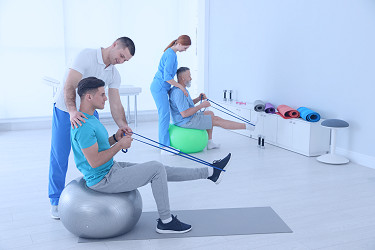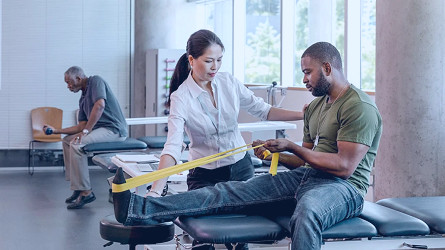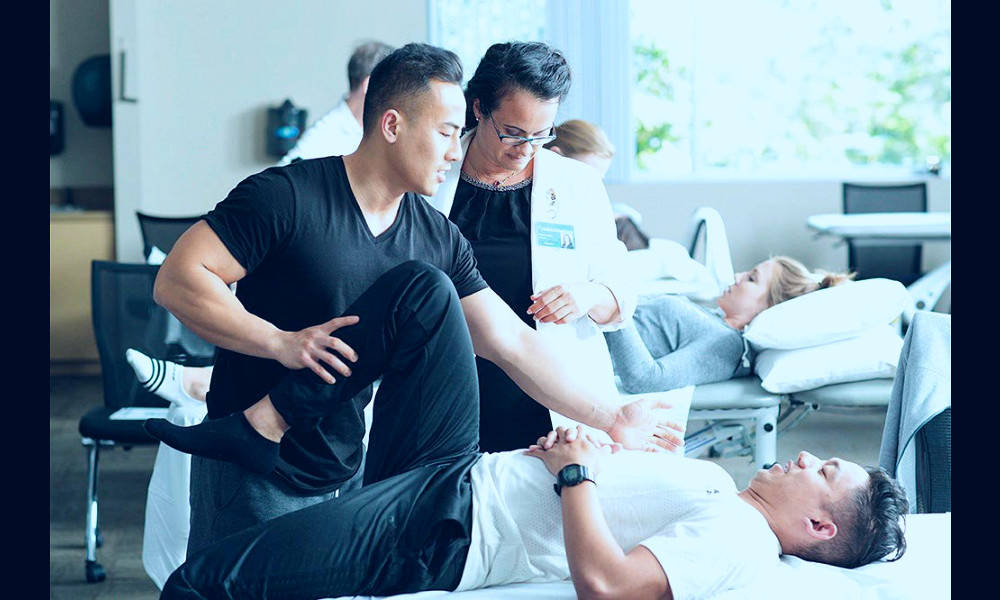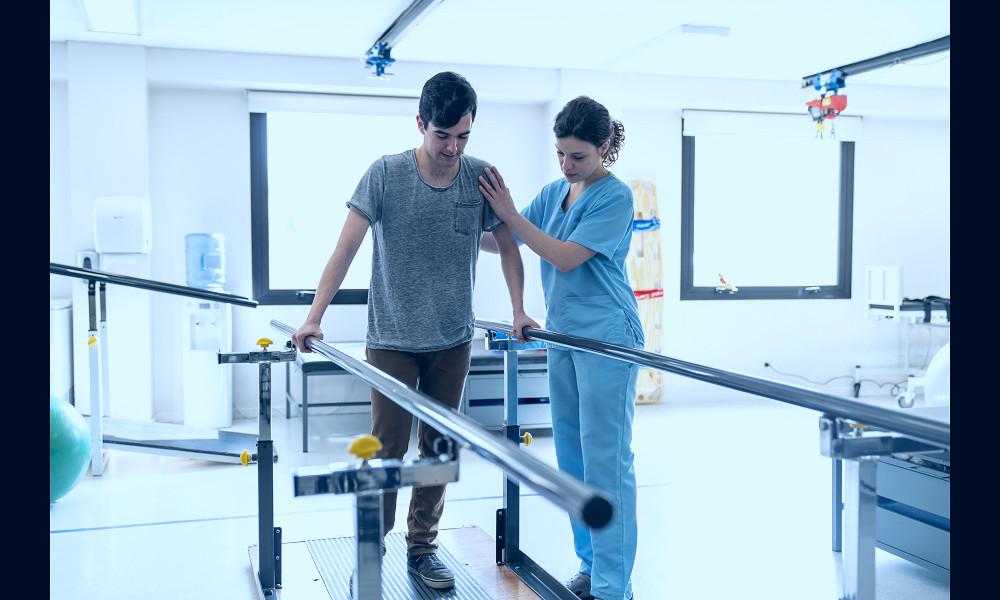
Revitalize Your Life: Choose Physical Therapy for a Healthier Tomorrow
Physical therapy is a specialized healthcare service that aims to restore, maintain, and promote optimal physical function and wellness. It involves a series of exercises, hands-on care, and patient education to manage pain, improve mobility, and recover from injury or illness. With physical therapy, you can return to your daily activities without discomfort, prevent future injury, and achieve better long-term health. Whether you're recovering from surgery, dealing with chronic pain, or rehabilitating after an injury, physical therapy is the path to a faster, safer, and more effective recovery.
| Type of Service | Physical Therapy |
| Purpose | Rehabilitation, Injury Prevention, Pain Management, Improve Mobility |
| Treatment Methods | Manual Therapy, Exercise Prescription, Electrotherapy, Hydrotherapy, Heat Treatment, Cold Treatment |
| Specializations | Orthopedic, Geriatric, Neurological, Cardiovascular and Pulmonary, Pediatric, Sports |
| Conditions Treated | Arthritis, Stroke, Fractures, Spinal Cord Injuries, Sports Injuries, Post-surgical Rehabilitation |
| Duration of Sessions | 30 minutes to 1 hour (may vary) |
| Frequency of Sessions | 1-2 times per week (may vary) |
| Location | Hospital, Clinic, Rehabilitation Centers, Home Care |
| Equipment Used | Resistance Bands, Exercise Balls, Treadmills, Weights, Exercise Machines |
| Professionals Involved | Physical Therapists, Physical Therapist Assistants, Rehabilitation Nurses |
| Insurance Coverage | May be covered by health insurance (subject to policy) |
| Education and Licensing | Bachelor's or Master's Degree in Physical Therapy, State Licensing |
| Follow-up | Regular progress assessment, Adjustment of treatment plan as necessary. |
Personalized Treatment Plans
The first compelling factor to consider when choosing physical therapy is the personalized treatment plans. Physical therapists devise individualized plans that cater to the unique needs of each client. This includes a mix of manual therapy, exercises, and education about your body, which ensures that the therapy is effective for your specific condition. Read more
Expertise and Experience
Physical therapists are highly trained and experienced healthcare professionals. They possess a deep understanding of human body mechanics, which allows them to diagnose and treat a broad range of physical conditions. Their expertise is invaluable in ensuring that you receive the most effective treatment possible. Read more
Non-invasive Treatment
Physical therapy is a non-invasive form of treatment. This means that it does not involve surgery or medication, which can carry potential side effects. Instead, it utilizes techniques such as massage, heat treatment, and exercise to restore function and relieve pain. Read more
Pain Management
One of the primary reasons people seek physical therapy is to manage pain. Physical therapists utilize various techniques to help reduce pain and inflammation, making it an excellent choice for those wanting to manage chronic pain without resorting to long-term use of medication. Read more

Preventative Care
Beyond treating existing conditions, physical therapy also plays a crucial role in preventative care. Regular physical therapy can help strengthen the body and improve flexibility, thus reducing the risk of injury in the future. Read more
Improved Mobility
If you're experiencing difficulty moving or walking, physical therapy can be a big help. Physical therapists can effectively address these issues by designing mobility exercises that gradually improve your range of motion and overall mobility. Read more
Rehabilitation after Surgery
Physical therapy is an essential part of the recovery process after surgery. It aids in speeding up recovery, improving mobility, and reducing pain post-surgery. Read more
Manage Age-Related Issues
As we age, we may develop arthritis, osteoporosis, or need joint replacements. Physical therapy can help manage these age-related issues effectively, enhancing the quality of life in the process. Read more

Chronic Disease Management
Physical therapy can also assist with managing chronic diseases such as diabetes, heart disease, and more. By incorporating exercise into the treatment plan, physical therapy can help control symptoms and slow disease progression. Read more
Enhanced Performance
Athletes can benefit from physical therapy to enhance their performance. Physical therapists can devise sport-specific training programs that optimize an athlete's performance while reducing the risk of injury. Read more
Facts
1. The Origins of Physical Therapy: Did you know that physical therapy has been around since 460 B.C.? It's true! The art of healing through physical means was practiced by none other than the famous ancient Greek physician, Hippocrates. He used massage and hydrotherapy techniques to treat his patients, setting the foundation for modern physical therapy.2. An All-Round Approach: Physical therapy is not just about physical health. It's an all-round approach that also considers the mental and emotional well-being of the patient. Therapists use their skills to help patients cope with the psychological stress and emotional trauma that may arise from their physical ailments.
3. More Than Just Exercise: While exercise forms a significant part of physical therapy, it's just one piece of the puzzle. Physical therapists use a wide range of techniques, including manual therapy, education, and advice, to help patients manage pain and prevent disease.
4. Preventive Care: Physical therapy isn't just for those recovering from injuries or surgeries. It's also used as preventive care. Regular sessions with a physical therapist can help identify potential health issues before they become serious problems, improving overall health and longevity.
5. The Scope of Physical Therapy: Physical therapy is incredibly versatile and treats a range of conditions, from sports injuries to stroke recovery. It can even help manage chronic conditions like diabetes and heart disease, making it a valuable tool for overall health management.
6. Physical Therapy and Technology: Physical therapy is not stuck in the past. It has embraced modern technology with open arms. Virtual reality, robotics, and telehealth are increasingly being used in physical therapy, enhancing treatments and making them more effective.
7. Education and Expertise: Physical therapists are highly educated and skilled healthcare professionals. In the USA, they must earn a Doctorate in Physical Therapy (DPT) degree, which can take up to seven years to complete, including undergraduate work.
8. Reducing Opioid Dependence: With the ongoing opioid crisis, physical therapy offers a safer alternative for managing chronic pain. It can reduce or eliminate the need for opioids, helping to combat the devastating effects of opioid addiction.
9. Improving Mobility: Regardless of age or physical condition, physical therapy can help improve mobility. Whether it's helping a child with a physical disability to play and interact with peers, or aiding an elderly person to maintain independence, physical therapy plays a crucial role.
10. Quality of Life: Ultimately, the goal of physical therapy is to improve the quality of life. By managing pain, improving mobility, and preventing disease, therapists help patients to live their lives to the fullest, regardless of their physical limitations.
Read more
 What Is Physical Therapy? – Forbes Health
What Is Physical Therapy? – Forbes Health What Are the Benefits of Physical Therapy?
What Are the Benefits of Physical Therapy? Benefits of Physical Therapy for Athletes – Children's Health
Benefits of Physical Therapy for Athletes – Children's Health What to Look for in a Physical Therapist - The New York Times
What to Look for in a Physical Therapist - The New York Times Benefits Of Physical Therapy | Orthopaedic Associates of Central Maryland
Benefits Of Physical Therapy | Orthopaedic Associates of Central Maryland What Is Physical Therapy? Definition, Purpose, and Uses
What Is Physical Therapy? Definition, Purpose, and Uses Physical Therapy for Psoriatic Arthritis: 6 Things You Should Know
Physical Therapy for Psoriatic Arthritis: 6 Things You Should Know 4 Common Reasons Why Physical Therapy Is Important | OrthoBethesda
4 Common Reasons Why Physical Therapy Is Important | OrthoBethesda How Orthopedic Rehabilitation Physical Therapy Works
How Orthopedic Rehabilitation Physical Therapy Works Orthopedic Physical Therapy: What Is It, How Does It Help?
Orthopedic Physical Therapy: What Is It, How Does It Help? Physical Therapy Advancement Opportunities | USAHS
Physical Therapy Advancement Opportunities | USAHS Physical therapy: Who can benefit, and how can it help?
Physical therapy: Who can benefit, and how can it help? 10 Physical Therapy Specialties to Boost Your Career | USAHS
10 Physical Therapy Specialties to Boost Your Career | USAHS How Do You Become a Physical Therapist? - Sports Management Degree Guide
How Do You Become a Physical Therapist? - Sports Management Degree Guide Physical Therapy: Why You Need It and What to Expect
Physical Therapy: Why You Need It and What to Expect What Is Pediatric Physical Therapy? | AZ Medical Group
What Is Pediatric Physical Therapy? | AZ Medical Group Is there benefit to physical therapy before surgery? | Ohio State Medical Center
Is there benefit to physical therapy before surgery? | Ohio State Medical Center Physical Therapy - The Doctors Clinic
Physical Therapy - The Doctors Clinic Sports Physical Therapy for Kids and Teens | Children's Healthcare of Atlanta
Sports Physical Therapy for Kids and Teens | Children's Healthcare of Atlanta Physical Therapy for Chronic Pain | Summit Health
Physical Therapy for Chronic Pain | Summit Health 


















